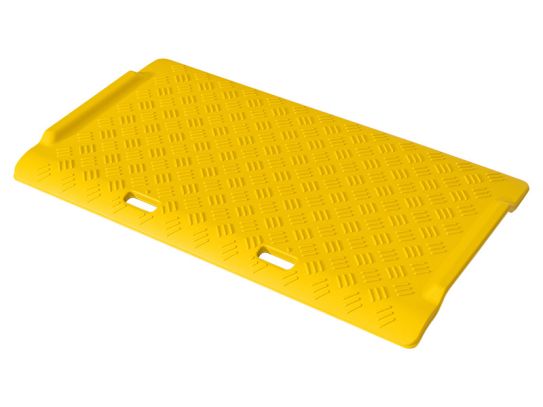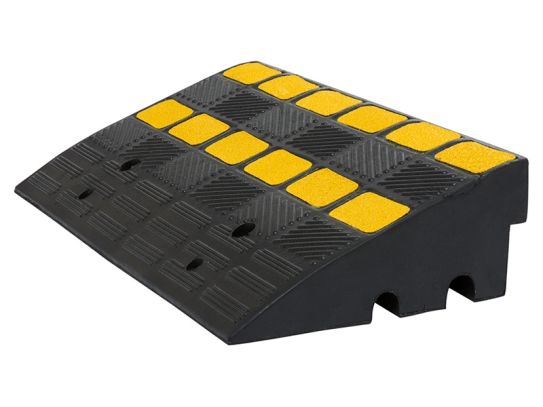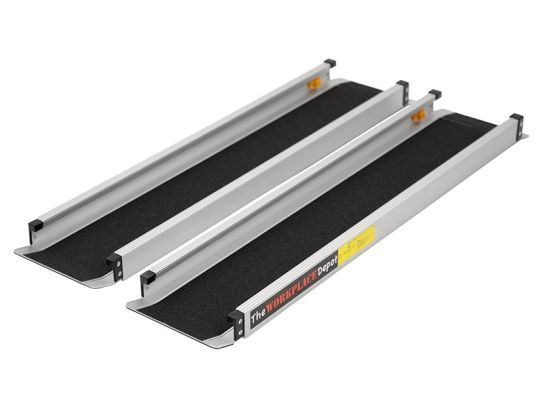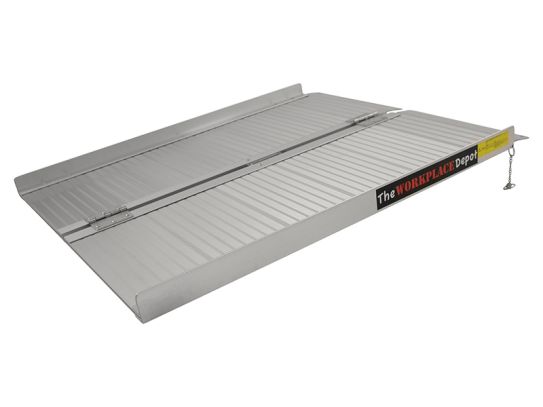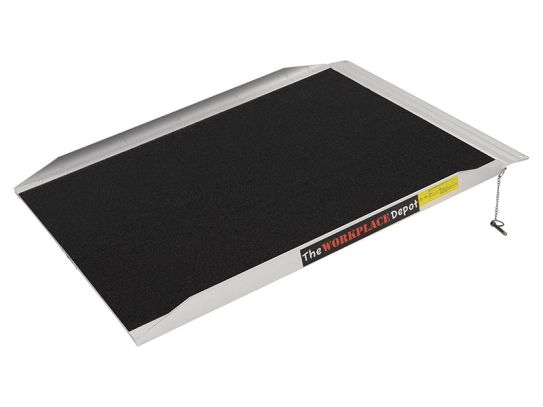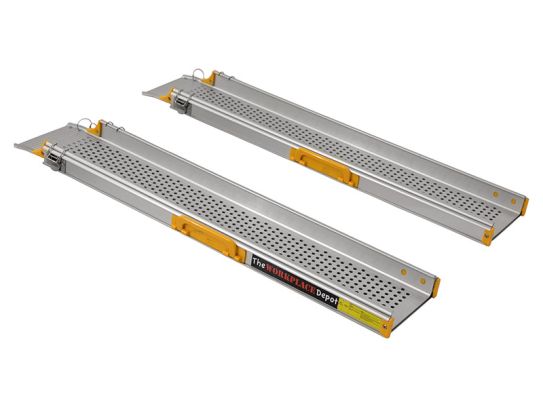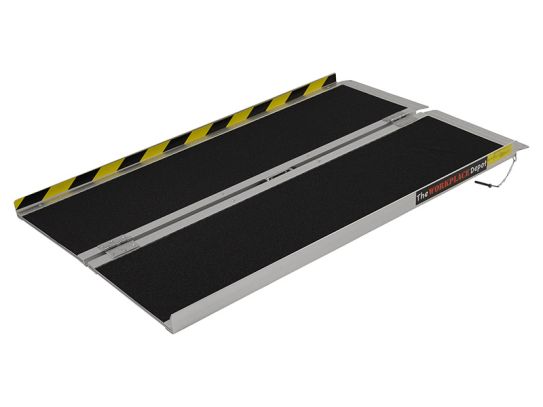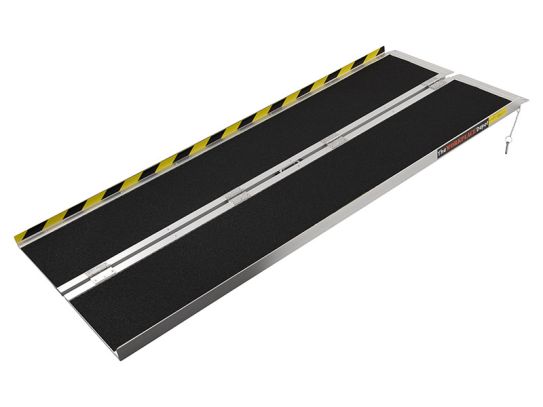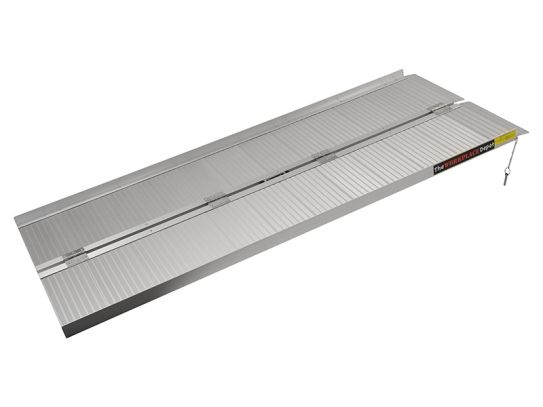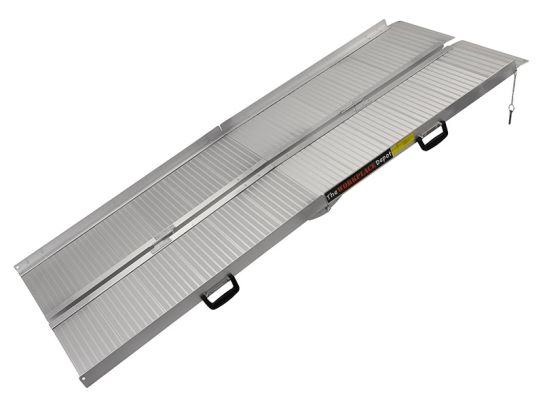Ramps
The Right Ramp for Every Situation
Looking for a ramp to make your life easier? Then look no further! We have a wide range of ramps to choose from, including kerb ramps, wheelchair ramps, doorway ramps, threshold ramps, and access ramps. Our ramps are made from durable materials like rubber, plastic, and aluminium, and are designed to provide safe and easy access to all kinds of spaces. Whether you're a wheelchair user, a parent with a stroller, or just someone looking to make their home or business more accessible, we've got the ramp for you. Shop our selection today and discover the convenience of a ramp!
What Are Ramps?
Ramps are inclined surfaces that are used to provide access to a building or other structure. They are typically used by people who use wheelchairs, scooters, or other assistive devices, but can also be useful for people pushing strollers, carts, or other equipment. Ramps are typically made from durable materials like concrete, wood, or metal, and are designed to be safe and easy to use. Some common types of ramps include kerb ramps, wheelchair ramps, doorway ramps, threshold ramps, and access ramps. These different types of ramps are designed to meet the specific needs of different users and environments.
What Are Some Common Uses for Ramps?
Ramps are commonly used to provide access to buildings or other structures that are not easily accessible to people using wheelchairs, scooters, or other assistive devices. This may include homes, businesses, schools, hospitals, or other public buildings. Ramps are also commonly used in outdoor settings, such as parks, playgrounds, or other recreational areas. In addition to providing access for people with disabilities, ramps can also be useful for people pushing strollers, carts, or other equipment. Ramps can also be used to help people who have difficulty climbing stairs, or who need to transport heavy or bulky objects.
What Are the Different Types of Ramps?
There are several different types of ramps that are designed for different purposes and environments. Some common types of ramps include:
- Kerb ramps: These are ramps that are used to provide access over a kerb or other raised edge. They are typically made from concrete or other durable materials, and are designed to be easy to use and safe.
- Wheelchair ramps: These are ramps that are specifically designed for use by people in wheelchairs. They are typically longer and steeper than other types of ramps, and are designed to provide smooth and easy access to buildings and other structures.
- Doorway ramps: These are ramps that are designed to fit over the threshold of a doorway, providing a smooth transition from the exterior of a building to the interior. They are typically made from lightweight materials like plastic or aluminium, and are easy to install and remove.
- Threshold ramps: These are ramps that are used to bridge the gap between two different levels, such as between a doorway and a room, or between a building and the ground. They are typically made from durable materials like rubber or aluminium, and are designed to be easy to use and safe.
- Access ramps: These are ramps that are designed to provide access to a building or other structure for people with disabilities. They are typically longer and steeper than other types of ramps, and are designed to provide smooth and easy access to buildings and other structures.
What Are the Key Features to Consider When Choosing Ramps?
When choosing ramps, there are several key features to consider to ensure that you select the right ramp for your needs. Some of the key factors to consider include:
- The intended use: Different types of ramps are designed for different purposes, so it's important to consider the specific use for the ramp when selecting one. For example, if you need a ramp for a wheelchair user, a wheelchair ramp would be the most appropriate choice.
- The materials: Ramps are typically made from durable materials like concrete, wood, or metal, but there are also ramps made from lighter materials like plastic or aluminium. The materials used in the construction of the ramp can affect its durability, weight, and cost.
- The size and dimensions: Ramps come in a range of sizes and dimensions, so it's important to consider the specific space where the ramp will be used when choosing one. Measure the area carefully to ensure that the ramp will fit properly and provide safe and easy access.
- The slope: The slope of the ramp is an important consideration, as it determines how steep the ramp will be. A steeper slope may be more difficult to use, but may also be more compact and easier to store. A gentler slope may be easier to use, but may also take up more space.
- The weight capacity: Ramps are designed to support a certain amount of weight, so it's important to consider the weight of the user and any equipment they may be using when selecting a ramp. Choose a ramp with a weight capacity that is appropriate for your needs.
How Do I Measure for a Ramp?
To measure for a ramp, you will need to take several measurements to ensure that the ramp will fit properly and provide safe and easy access. Here are the steps to follow:
- Measure the height difference between the two levels that the ramp will span. This will give you the total height that the ramp needs to cover.
- Measure the width of the area where the ramp will be installed. This will give you the total width that the ramp needs to cover.
- Measure the length of the area where the ramp will be installed. This will give you the total length that the ramp needs to cover.
- Determine the slope of the ramp. The slope of the ramp is the ratio of the height difference to the length of the ramp. A steeper slope will be more difficult to use, but may also be more compact and easier to store. A gentler slope may be easier to use, but may also take up more space.
- Consider the weight capacity of the ramp. Ramps are designed to support a certain amount of weight, so it's important to consider the weight of the user and any equipment they may be using when selecting a ramp. Choose a ramp with a weight capacity that is appropriate for your needs.
Once you have taken these measurements, you can use this information to choose a ramp that is the right size and has the appropriate slope and weight capacity for your needs.
Are There Any UK or European Industry Standards or Regulations That Apply to Ramps?
In the UK and Europe, there are several industry standards and regulations that apply to ramps. These standards and regulations are designed to ensure that ramps are safe, functional, and accessible for all users.
One key standard is the British Standard BS 8300:2009, which provides design and performance requirements for ramps that are used by people with disabilities. This standard covers factors such as the slope, surface, handrails, and lighting of ramps, and sets out requirements for the design, construction, and testing of ramps to ensure that they are safe and accessible.
In Europe, the main regulation that applies to ramps is the European Standard EN 1398:2009, which sets out requirements for the design, construction, and testing of ramps used by people with disabilities. This standard covers factors such as the slope, surface, handrails, and lighting of ramps, and is intended to ensure that ramps are safe and accessible for all users.
In addition to these standards and regulations, there are also specific requirements for ramps in the UK and European building codes, which set out requirements for the design, construction, and installation of ramps in buildings and other structures. These requirements are intended to ensure that ramps are safe, functional, and accessible for all users.
